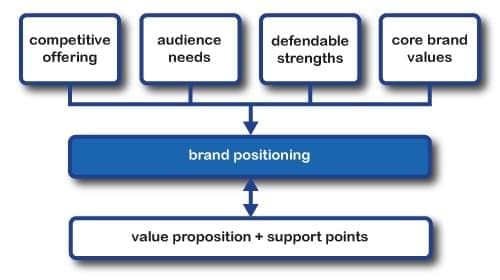In today’s cluttered world of brands & heavy trigger of marketing & social media campaigns, customers are being confused as which is the right brand to fulfill its need, whether its bought at right price & with said benefits. The medium to buy brands has become easy but to map customers satisfaction has become complex.
Moreover with boom of e-commerce business where virtually customers are seeing thousands of brand for same product & category becomes tough for the companies to differentiate its brand from competition.
Marketing Guru Al Ries and Jack Trout in their bestselling book “Positioning – The Battle for Your Mind.” Introduced concept of positioning.
Brand Positioning is a marketing strategy that aims to make a brand occupy a distinct position compared to competing brands, in the mind of the customer. Companies apply this strategy either by emphasizing the distinguishing features of their brand (what it is, what it does and how, etc.) or they may try to create a suitable image (inexpensive or premium, utilitarian or luxurious, entry-level or high-end, etc.) through advertising.
It’s the perception of the brand that companies create in consumers mind.
It is the aggregate perception that market has of a particular company, product or service in relation to their perceptions of the competitors in the same category. An important concept in positioning is that it expects that consumers compare and analyze products in the marketplace, whether based on features of the product itself (quality, multiple uses, etc.), price, and/or packaging and image. It will happen whether or not a company’s management is proactive, reactive or passive about the ongoing process of evolving a position. But a company can positively influence the perceptions through enlightened strategic actions.
Brand positioning is ongoing process which company has to align with its mission & vision statements , product lines ,target markets ,competitor analysis & filter to most striking feature of brand that it will be known & perceived by customers. It needs to create credibility & differentiate itself.
Its like company making a brand promise to its target customers & always abide by it. Deviation from the brand deliverables will change the perception of customers & thus brand positioning will not be in line.
Brand Positioning Strategy Process :
In order to create a brand position strategy, company must first identify brand’s uniqueness and determine what differentiates from the competition.
- Evaluate current positioning of products in the marketplace w.r.t consumer insight
- Mapping of competitors & their values/brand benefits in target market
- Understand how each competitor is positioning their brand
- Create uniqueness of the brand & compare with competition
- Develop a distinct and value-based positioning idea which needs to be realistic & emotional connected with customers.
- Design a simple, clear & non confusing brand positioning statement along with brand promise to customers.
- Conduct consumer insight to understand the perception pattern of the brand & evaluate whether its in line to crafted positioning strategy.
Recently , Nautica , a global lifestyle brand for modern nautical style, is shifting course with a re-imagined take on its image. Nautica’s new approach to design and marketing celebrates the brand’s roots in New York City and its established nautical heritage through its new message: “Inspired by the sea, designed in the city.”
The marketing plan will include advertisements placed across all media platforms, including print, digital, television, and out of home. Print advertisements are set to run in more style-focused men’s and women’s publications, connecting strongly to the brand’s target consumers. Social campaigns and partnerships will align the brand with top influencers, and there will be experiential updates to ecommerce. Guerrilla marketing and in-store events will celebrate the new brand positioning in US stores and key cities around the world. The spirit of the Nautica brand will always remain the same: effortless, classic, and inspired by the sea.
To conclude, positioning idea must be clear in terms of both target market and degree of difference in advantages suitable to different segments. The target market should be clearly demarcated and identifiable in terms of demographic or geographic parameters, or a combination of both. When marketers cannot resist offering the product besides targeted market, the clarity of the communication becomes blurred; the value proposition of the products narrows down. This situation can create threat to the product’s existence in a market. Clearness, Constancy, Credibility, and Competitiveness – all 4 Cs are the inputs to successful positioning.
Key References:
- Al Ries and Jack Trout book “Positioning – The Battle for Your Mind.”
- cultbranding.com
- textileworld.com
- PRNewswire
- https://en.wikipedia.org/wiki/Positioning_(marketing)
- brandingstrategyinsider.com/brand-positioning
- Harvard Business Review Magazine
- Google images


